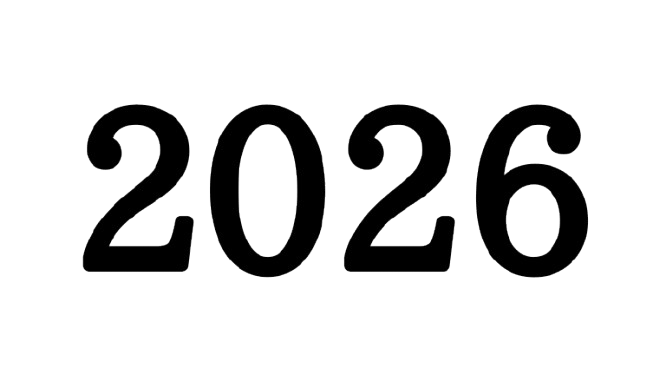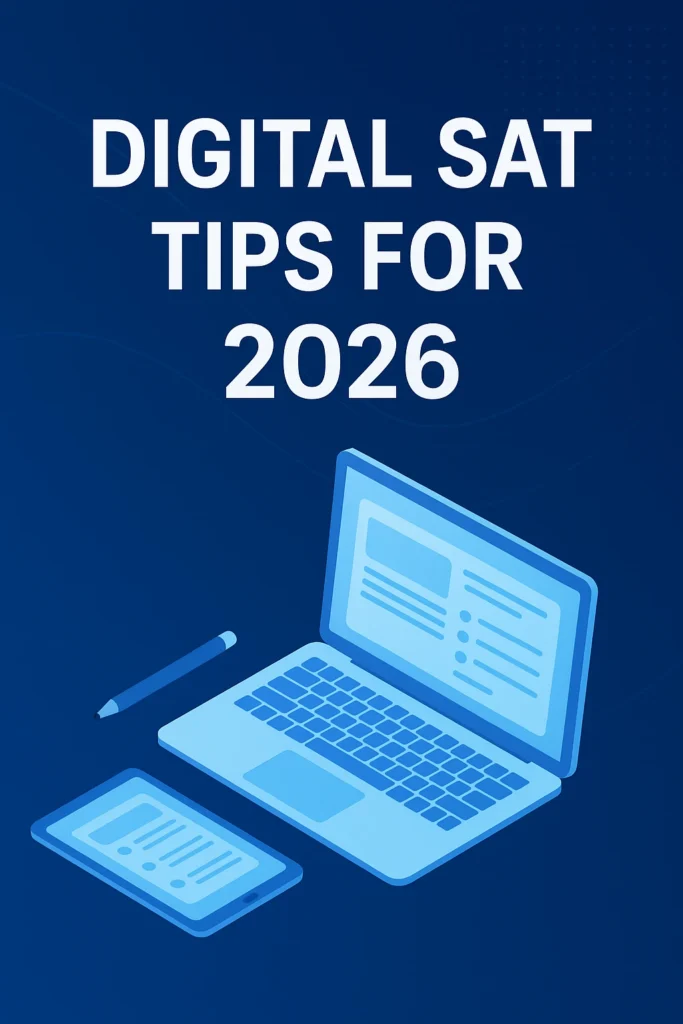The SAT has always been a defining milestone for college-bound students in the United States and around the world. But 2026 marks a new chapter: the SAT is now fully digital. Gone are the days of paper booklets, bubbling answer sheets, and lugging around calculators. In its place is a faster, smarter, adaptive test delivered on laptops and tablets.
This change has left many students and parents wondering: What’s different about the Digital SAT? How should students prepare? And what mistakes should they avoid?
This guide offers a complete roadmap for navigating the Digital SAT in 2026. From understanding its unique structure to using new tools, mastering test-taking strategies, and avoiding common prep pitfalls, we’ll cover everything you need to know to maximize your score.
Understanding the Digital SAT (2026 Edition)
The Digital SAT is more than just a computerized version of the paper test, it’s a fundamentally new exam. Here’s what makes it different:
Shorter Format, Smarter Design
- The Digital SAT lasts just over 2 hours (compared to the old 3-hour paper test).
- Questions are divided into two sections: Reading & Writing, and Math.
- Each section has two adaptive modules. Your performance on the first module determines the difficulty of the second.
Key Differences from the Paper SAT
| Feature | Old Paper SAT | Digital SAT (2026) |
| Length | 3 hours | 2 hours 15 minutes |
| Format | Fixed questions for everyone | Adaptive: harder/easier based on performance |
| Reading Passages | Long, multi-paragraph | Shorter, single-paragraph |
| Calculator Policy | Only certain sections | Calculator allowed throughout math section |
| Device | Pencil & paper | Laptop or tablet (student’s or school-issued) |
This adaptive format means accuracy matters more than ever. Doing well early in a section can unlock higher-level questions, which boost your score potential.
New Tools & Features Students Must Master
The Digital SAT introduces several built-in tools designed to streamline testing. While these features can be helpful, students need to practice with them ahead of time to avoid wasting time on test day.
Built-In Calculator
- Powered by Desmos, a widely used graphing calculator.
- Students no longer need to bring their own.
- Advantage: advanced graphing, solving, and visualization features.
- Tip: Learn shortcuts (e.g., plotting functions quickly) before test day.
Annotating & Highlighting
- Ability to underline, highlight, and annotate digital text.
- Critical for Reading & Writing, where passages are shorter but denser.
- Practice annotating on screen rather than paper.
Timer & Navigation Tools
- On-screen countdown clock → helps manage pacing.
- Questions can be flagged for review.
- Familiarity with the navigation panel reduces stress.
Device Use
- Students can use personal laptops or tablets, or school-issued devices.
- Battery life is critical → bring a fully charged device.
- College Board has guidelines for what to do if a glitch occurs.
Pro Tip: Don’t wait until test day to explore these tools. The Bluebook app (official practice software) mirrors the exact interface, giving you real-world practice.
For more on SAT in 2026, check our article on how to prepare for SAT in 2026.
Test-Taking Strategies for the Digital SAT
Preparation for the Digital SAT isn’t just about knowing the content, it’s about adjusting strategies for the adaptive digital format.
- Pace Yourself with Precision
- The shorter exam means less time per question.
- Use the digital timer to stay on track without panicking.
- Master the Adaptive Format
- Focus on accuracy early. Strong performance in the first module → harder second module → higher score potential.
- Don’t aim to “finish early”: use extra time to double-check answers.
- Rethink Reading Strategies
- Shorter passages = quicker reads, but denser with meaning.
- Each passage usually has only 1–2 questions.
- Strategy: skim efficiently, highlight keywords, and avoid over-analyzing.
- Smarter Math Approach
- Calculator is always available, but don’t overuse it.
- Mental math and estimation remain critical.
- Graphing functions quickly can save time.
- Guessing Works in Your Favor
- No penalty for wrong answers.
- Always select an answer, even if you’re unsure.
Best Resources for Digital SAT 2026 Prep
Students today have more prep tools than ever. Here are the best ways to prepare:
Official Tools
- College Board Bluebook App → the only way to practice in the real test format.
- Khan Academy Partnership → free, personalized SAT prep linked to official practice.
Third-Party Prep Platforms
- Magoosh, Kaplan, Princeton Review → offer digital SAT prep aligned with adaptive testing.
- PrepScholar → tailored study plans with analytics.
Study Schedule Recommendations
- 12 months out → Light prep, build reading and math habits.
- 6 months out → Take practice tests monthly, review weak areas.
- 3 months out → Full simulation tests, time-based drills.
- 1 month out → Focus on stamina, digital interface, and test-day readiness.
Common Mistakes to Avoid in 2026 Prep
Too many students prepare for the SAT as if it’s still on paper. Here are key mistakes to avoid:
- Only practicing with paper tests → doesn’t mimic the digital environment.
- Ignoring adaptive scoring → treating each question as equal.
- Over-relying on the calculator → slowing down instead of solving quickly.
- Not testing on the actual device → unfamiliar laptops/tablets can throw off timing.
- Skipping timed practice → pacing is different on digital exams.
Extra Preparation Tips for Students & Parents
Beyond studying content, logistics and mindset are crucial.
Device Readiness
- Ensure your laptop/tablet is updated, charged, and reliable.
- Carry a charger in case of emergencies.
Mental Preparation
- Practice in quiet environments similar to test day.
- Learn quick stress-reduction techniques (deep breathing, micro-breaks).
School-Sponsored Prep
- Many schools offer “digital SAT days.” Use them to simulate real conditions.
Balancing SAT & Schoolwork
- Avoid burnout by creating a realistic weekly schedule.
- Parents should encourage consistency rather than last-minute cramming.
Building a College-Ready Mindset
The SAT is important, but it’s not the only factor in admissions. A balanced strategy ensures students thrive in both testing and academics.
- Read regularly → strengthens comprehension across subjects.
- Practice math outside the classroom → reinforces problem-solving skills.
- Build digital literacy → typing speed, online reading, and calculator fluency all matter in college.
- Think beyond the SAT → admissions officers also value essays, GPA, and extracurricular activities.
Conclusion
The Digital SAT represents one of the biggest shifts in standardized testing in decades. For students preparing in 2026, success isn’t just about studying harder, it’s about studying smarter.
By understanding the test’s adaptive format, practicing with digital tools, mastering test-taking strategies, and avoiding common mistakes, students can walk into test day confident and ready.
The future of college admissions is digital and those who prepare early will have the edge.

